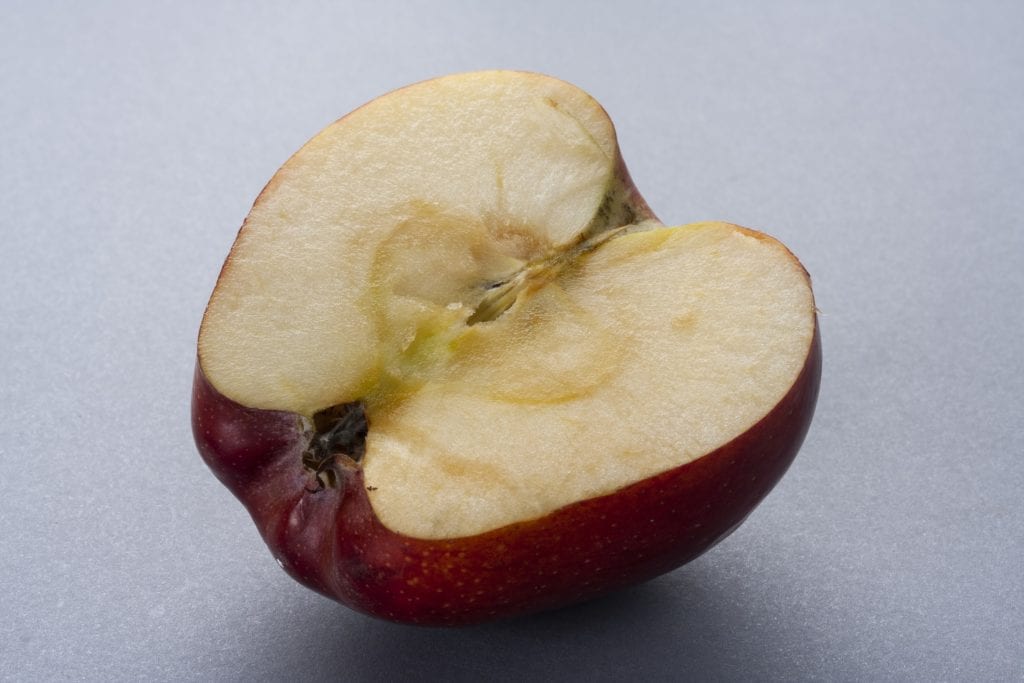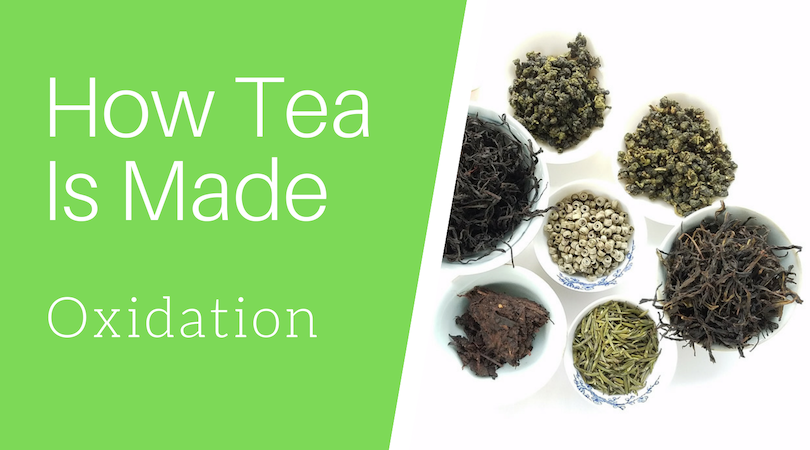This is the fourth post in a series where I will be breaking down each of the steps that tea undergoes, from leaf to cup. Check out last week’s post to learn about how tea is rolled.
What is oxidation?
Oxidation is a chemical reaction that results in tea leaves turning brown. This is the same process that causes apple slice that is exposed to the air to change color. Catechins like PPO ( polyphenol oxidase) are converted into theaflavins and thearubigins. Theaflavins are yellow in color and contribute to the briskness of tea. Thearubigins are red in color and they provide depth and body.
Chlorophyll in the leaves breaks down into pheophytin and pheophorbide. This also affects the brown color of the leaves. The Maillard reaction converts lipids, carotenoids, and glycosides into the volatile and nonvolatile compounds. This what gives tea its taste and wonderful range of aromas.
Cooler temperatures slow down the process and warmer temperatures speed it up. The tea leaves are heated by the tea maker in order to halt oxidation at exactly the right moment. This can be done by blanching, steaming, pan roasting, or tumbling in cylinders.

How is it different from fermentation?
Oxidation is an enzymatic process while fermentation is a metabolic one. I’ve ranted a bit about this before but the tea world really needs to stop using the term fermentation to describe this process. It is confusing and misleading for consumers. Particularly in the United States, fermentation is synonymous with the production of alcohol. Heicha is the only type of tea that is fermented.
Which teas are oxidized?
All teas are oxidized on some level. White and Green tea is often referred to as unoxidized but that isn’t exactly true. Leaves begin oxidizing the moment that they are plucked, albeit slowly. For bug bitten teas the process actually starts while they are still on the bush.
The difference between green tea and other types is that the leaves aren’t intentionally oxidized. The fixing step occurs immediately after withering in order to keep them in their green state.
White tea receives minimal processing but oxidation does occur before the leaves are dried. This is easiest to see in “moonlight” white teas like those produced in Yunnan. The undersides of the leaves are sometimes almost black in color.
Stay tuned next week to learn all about fixing!
